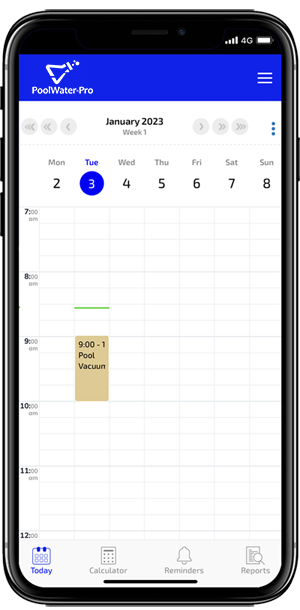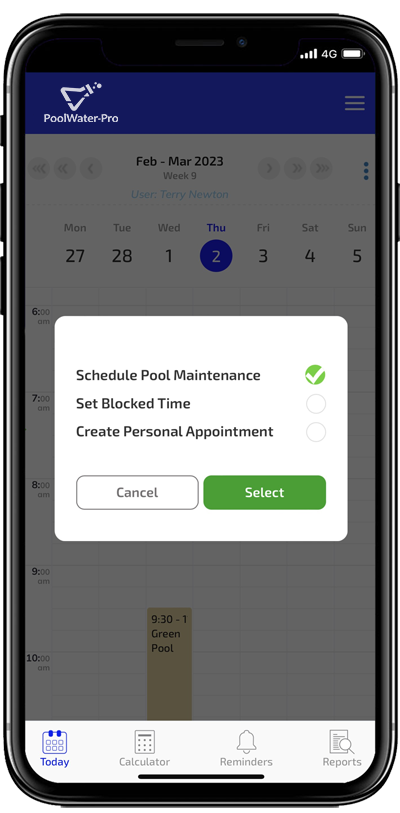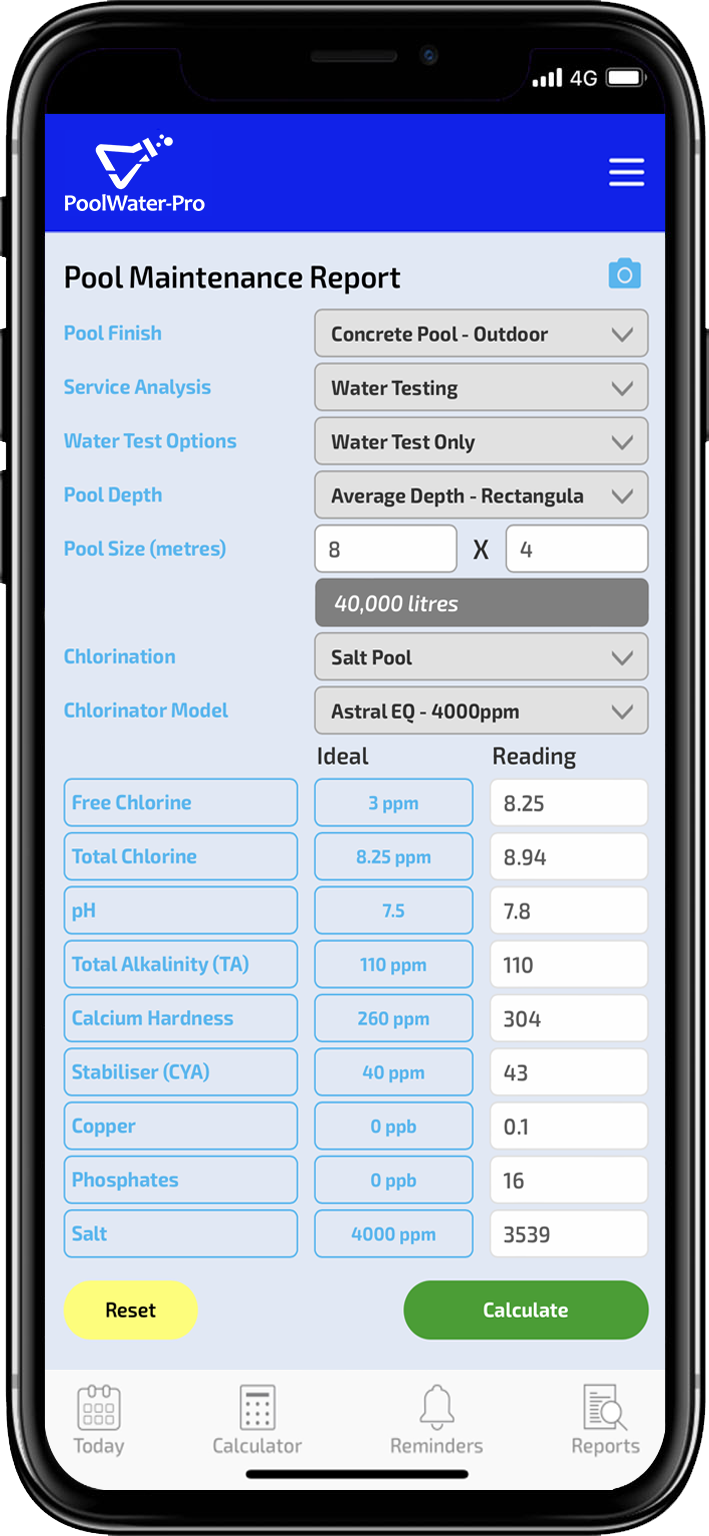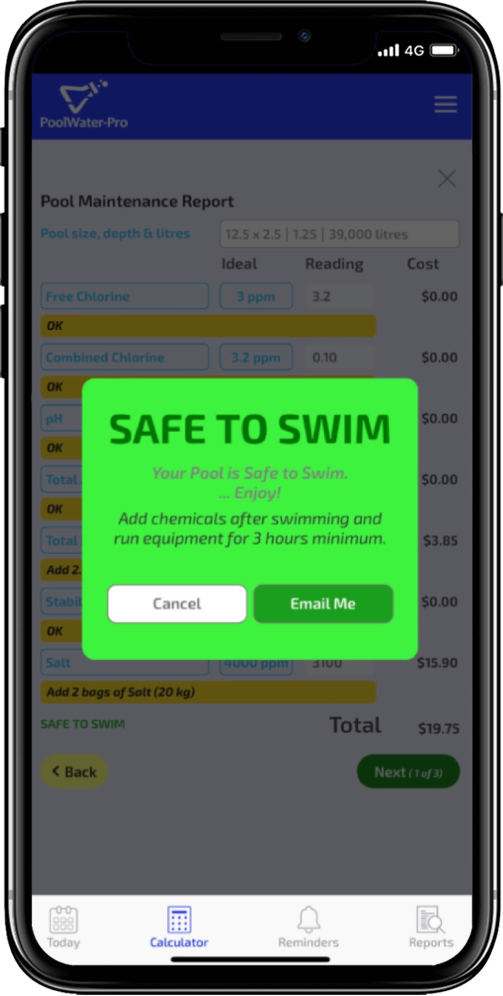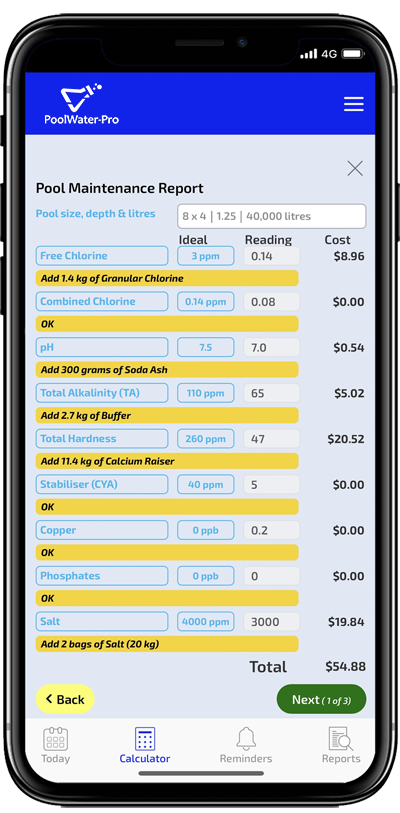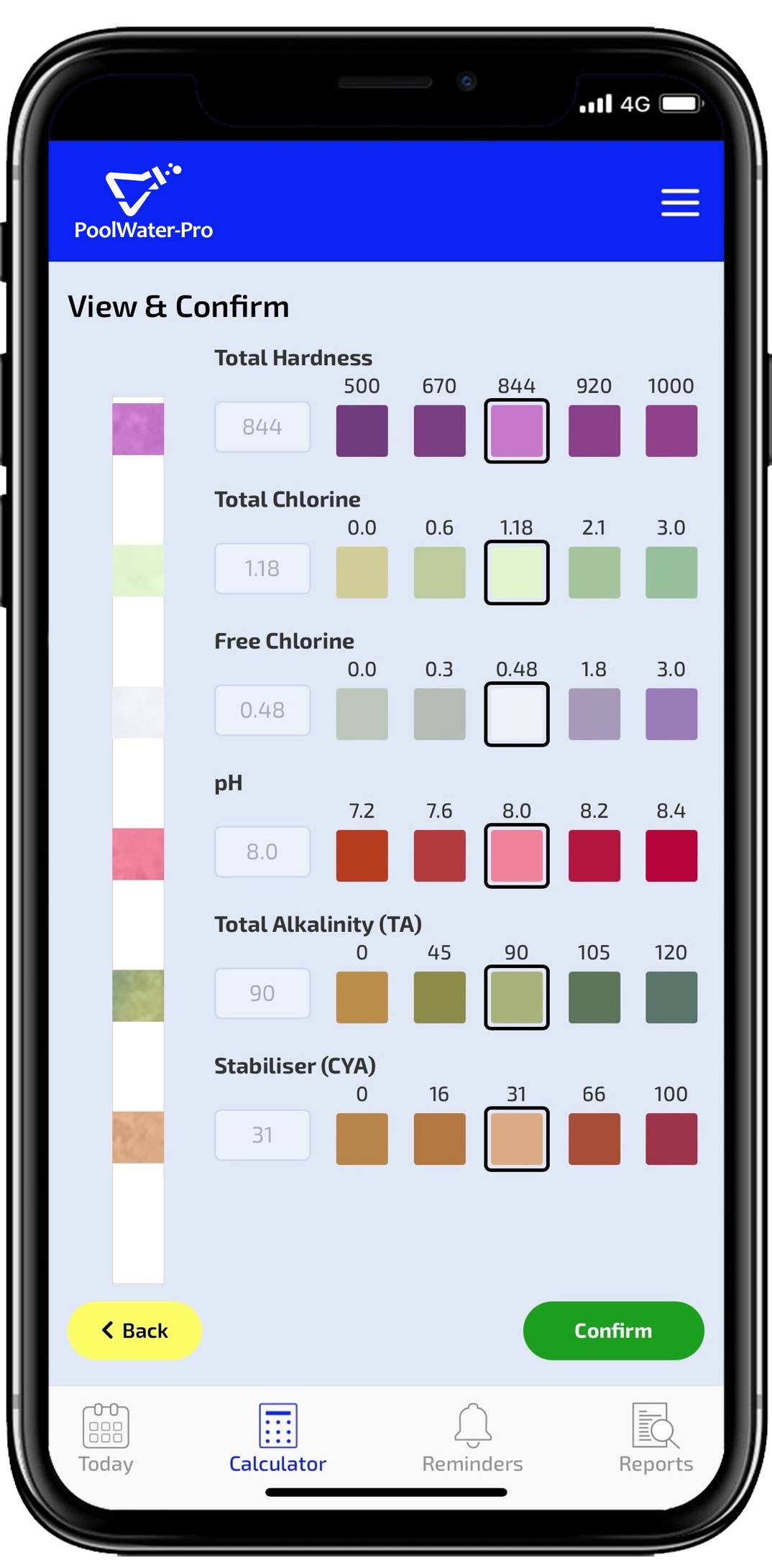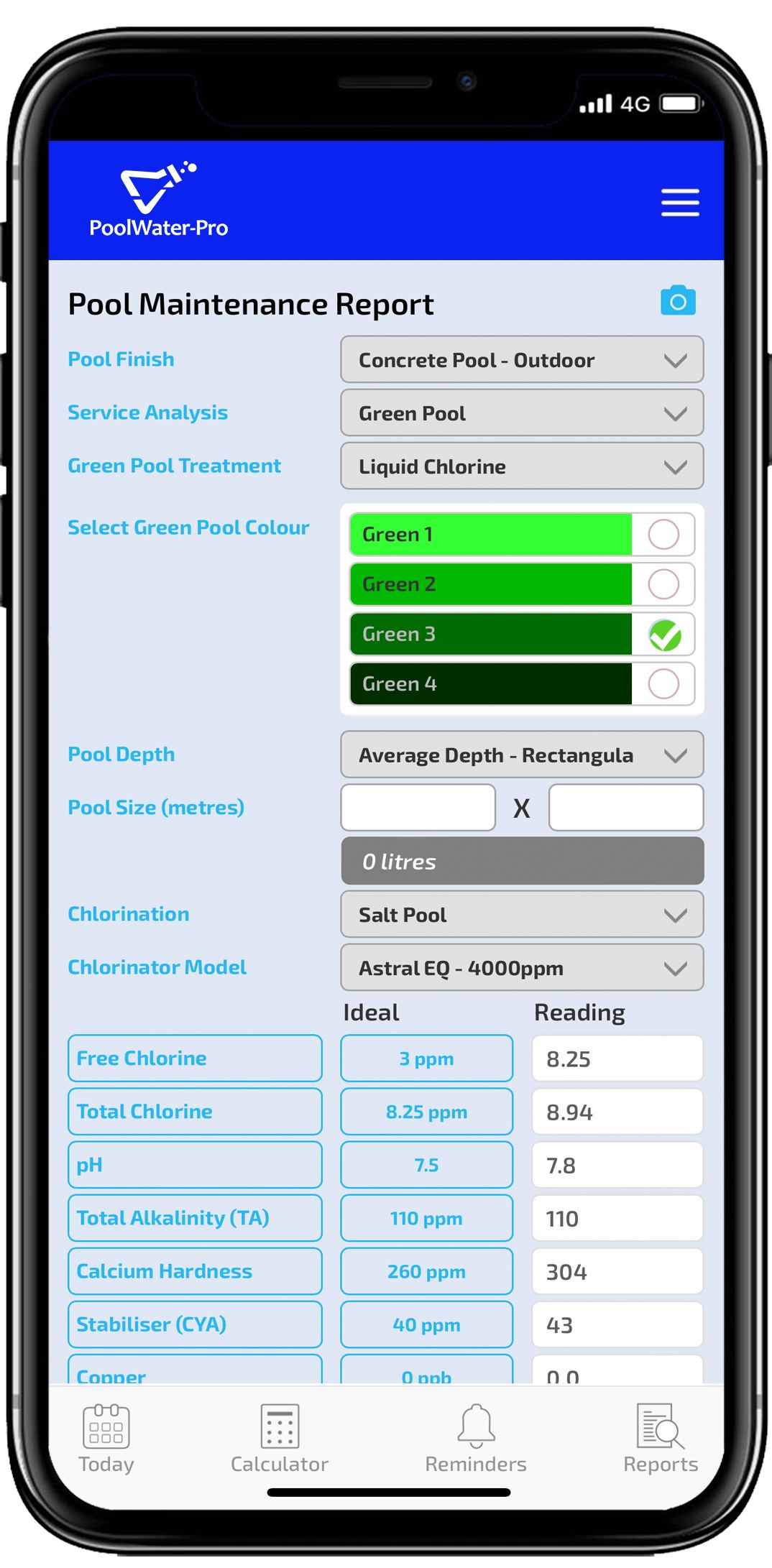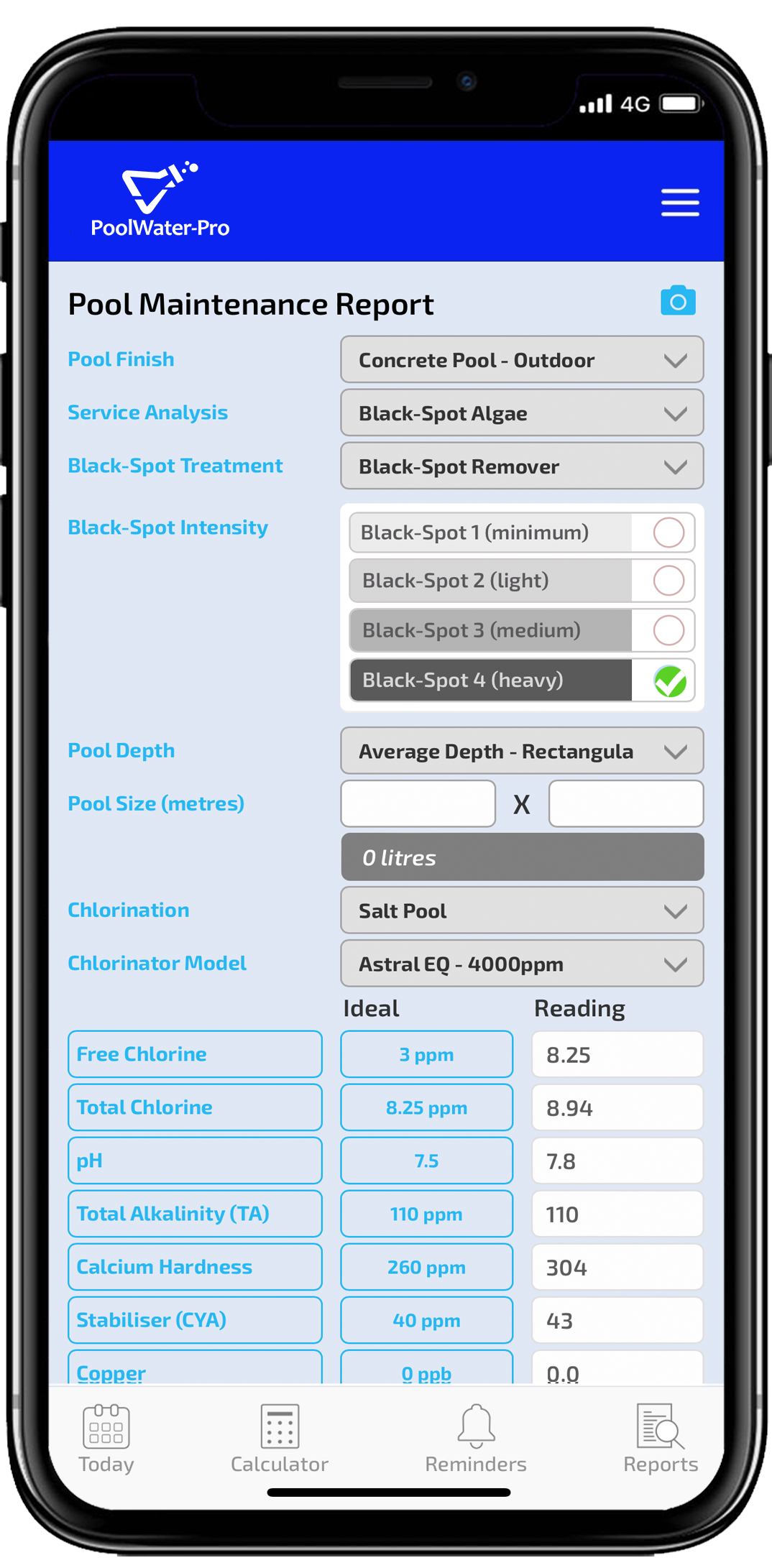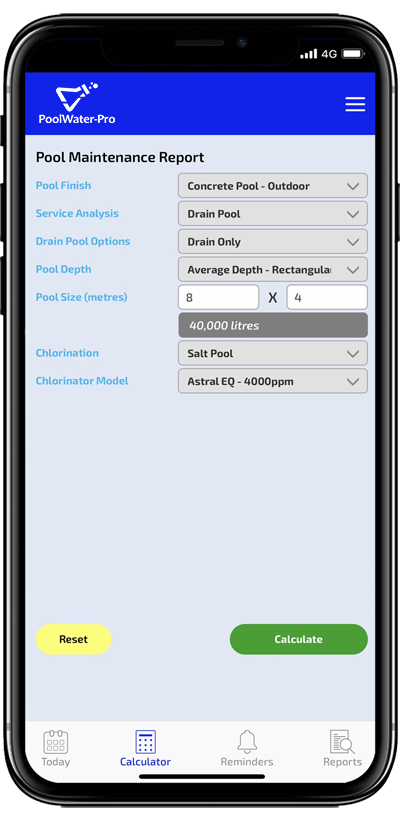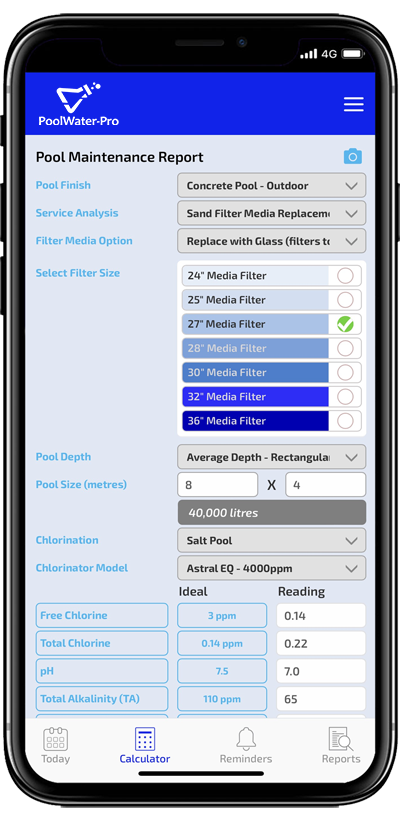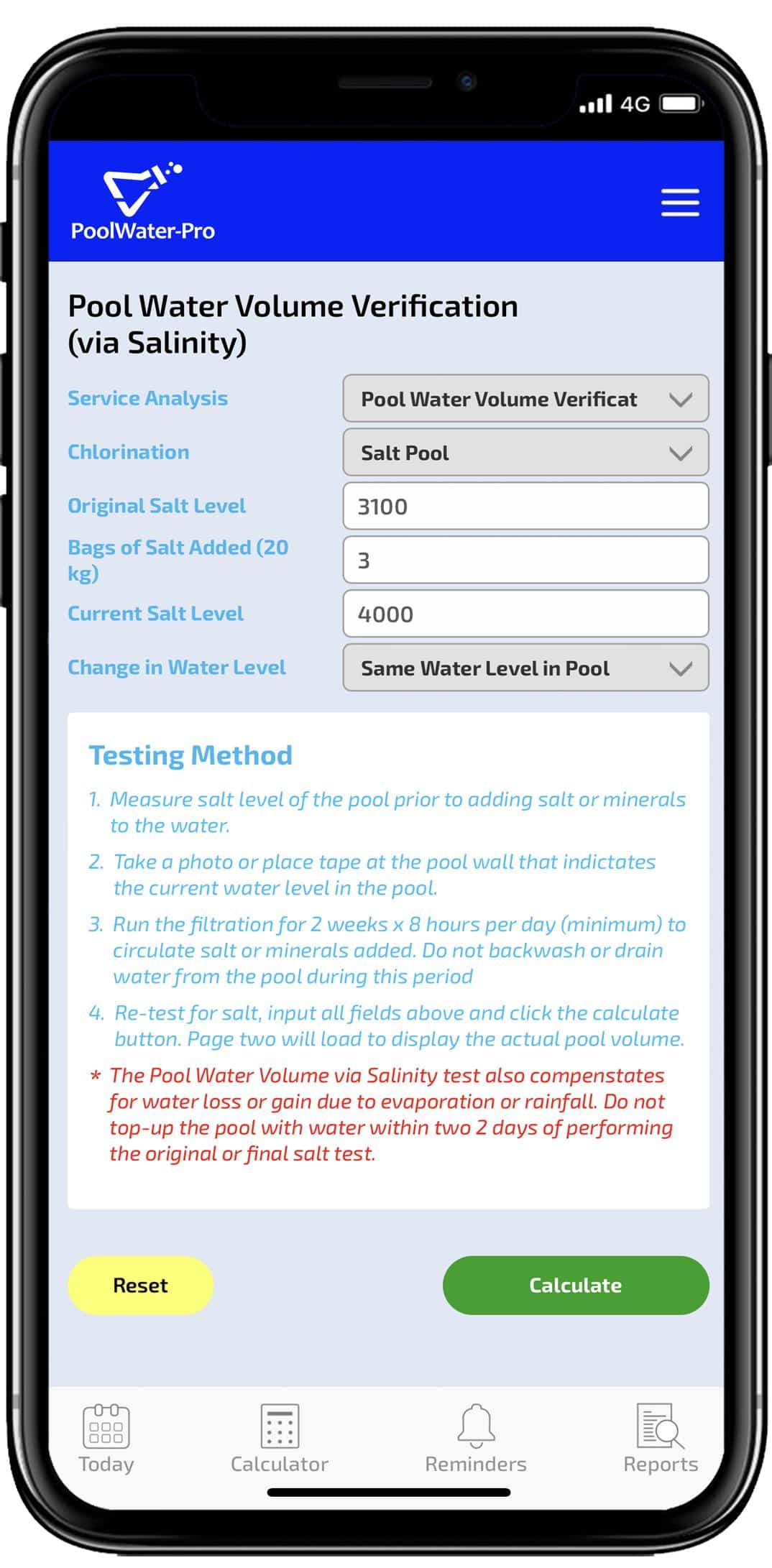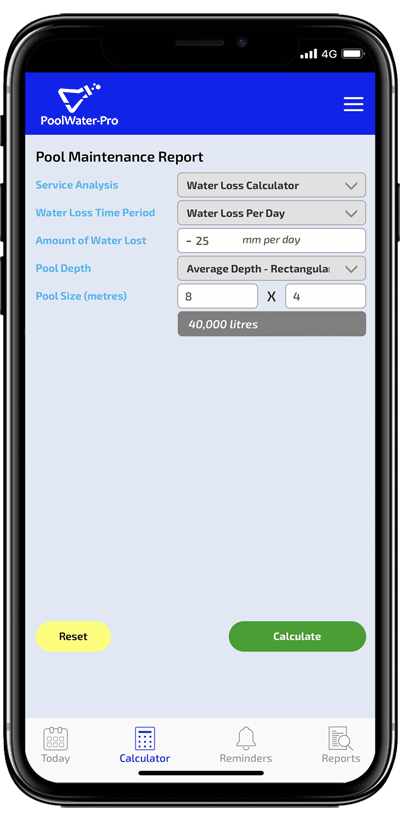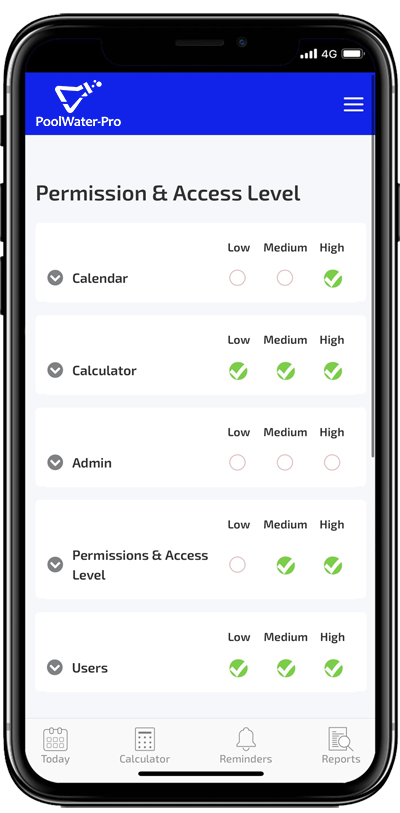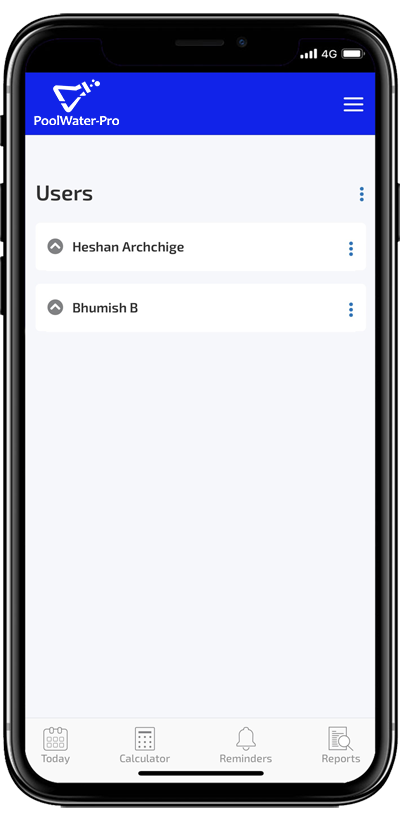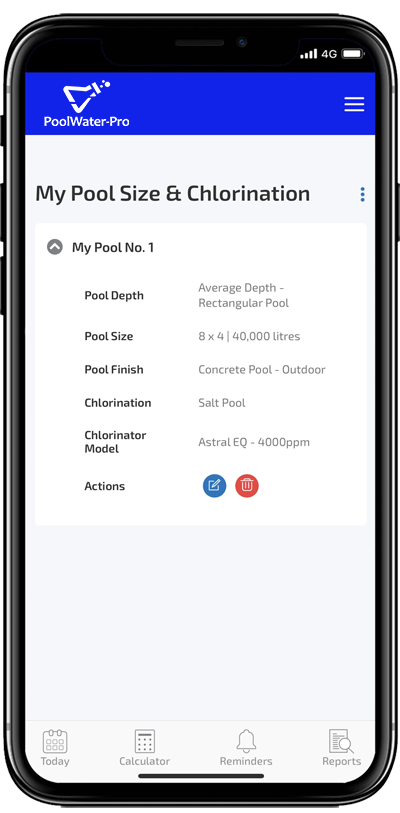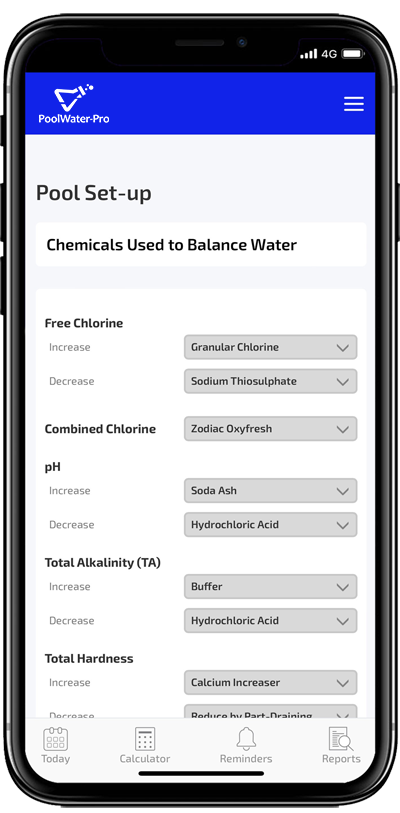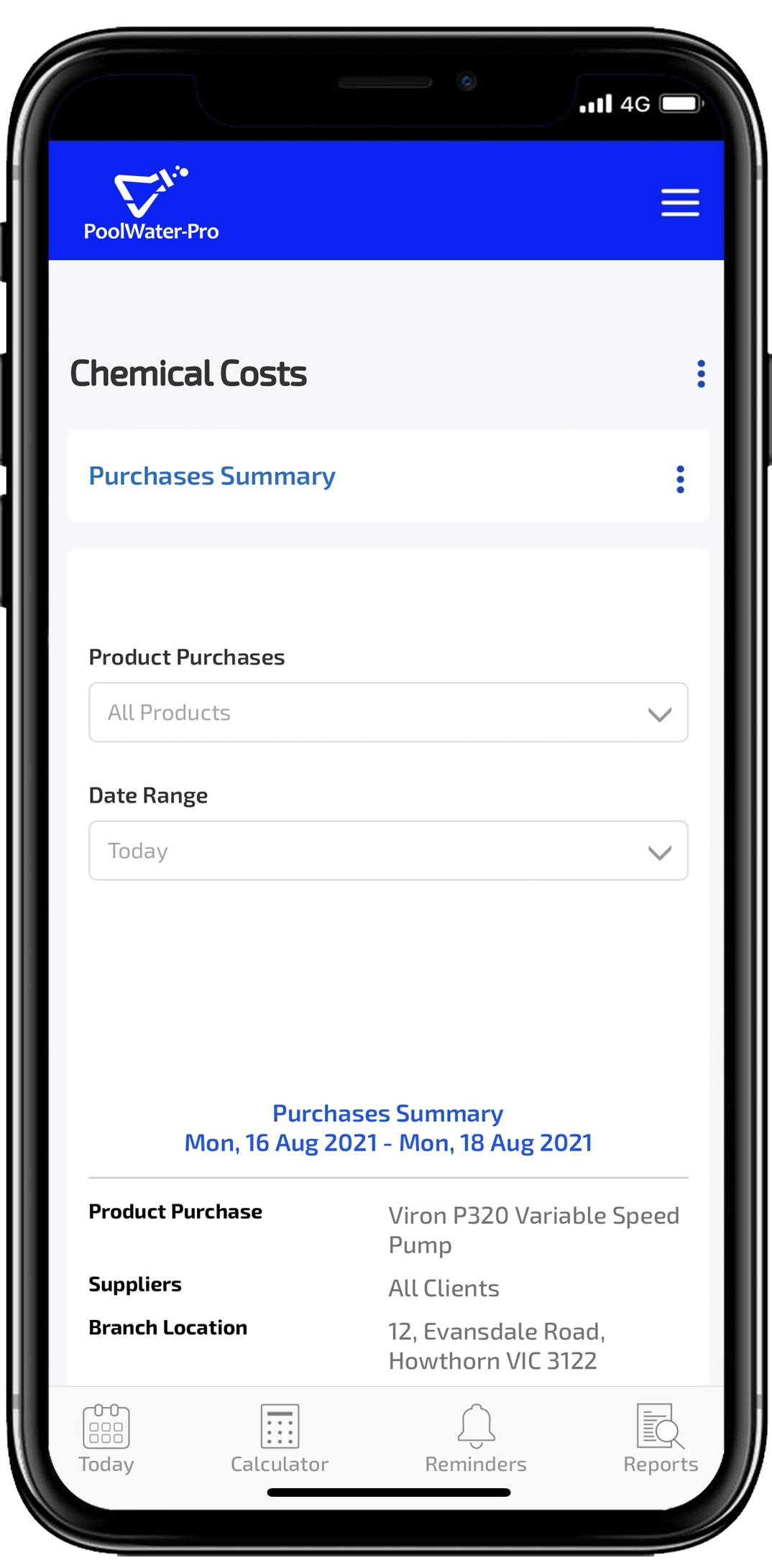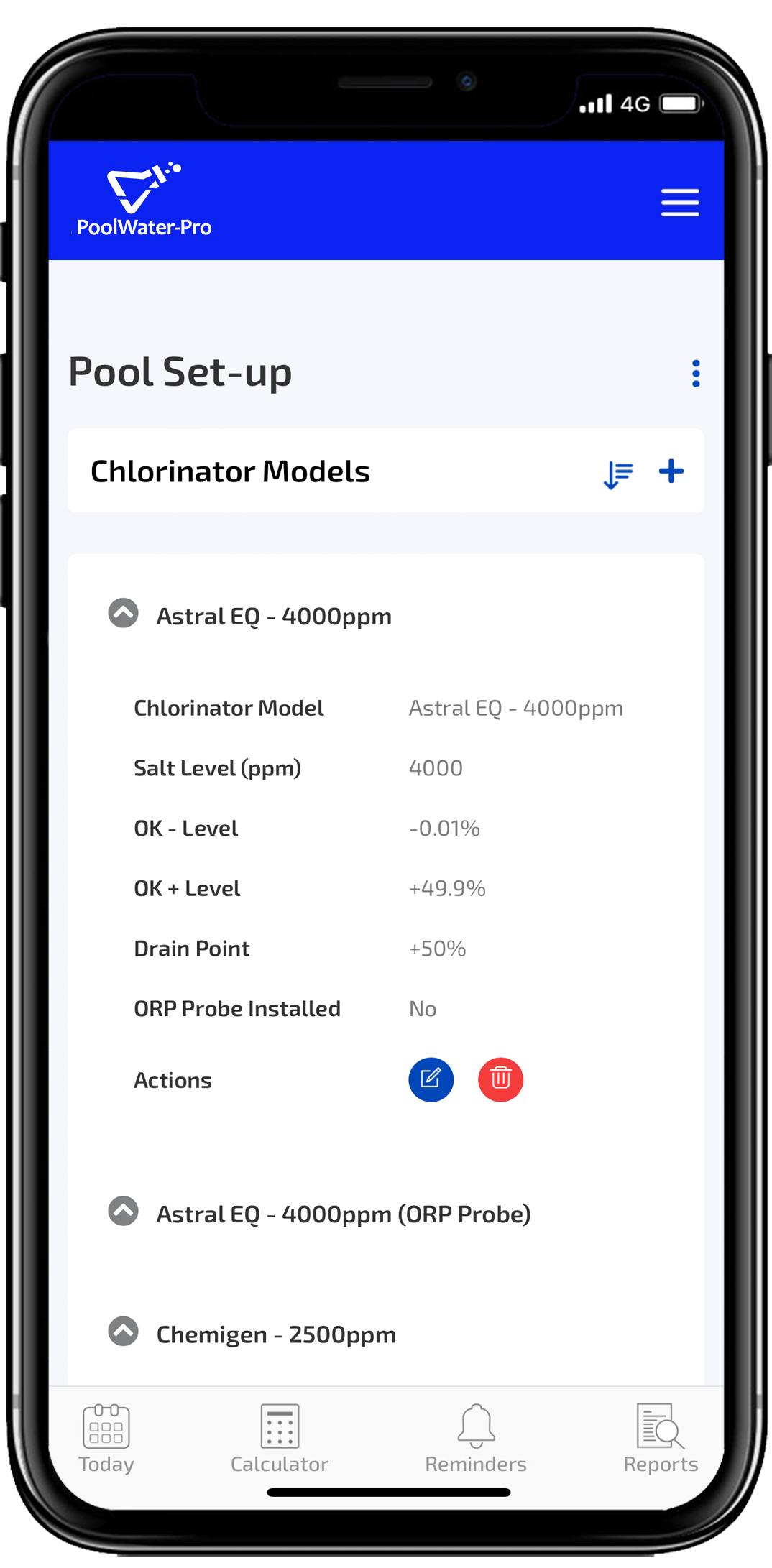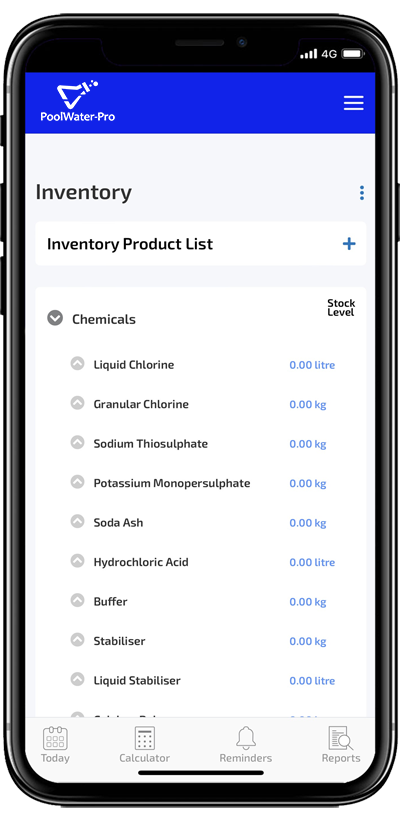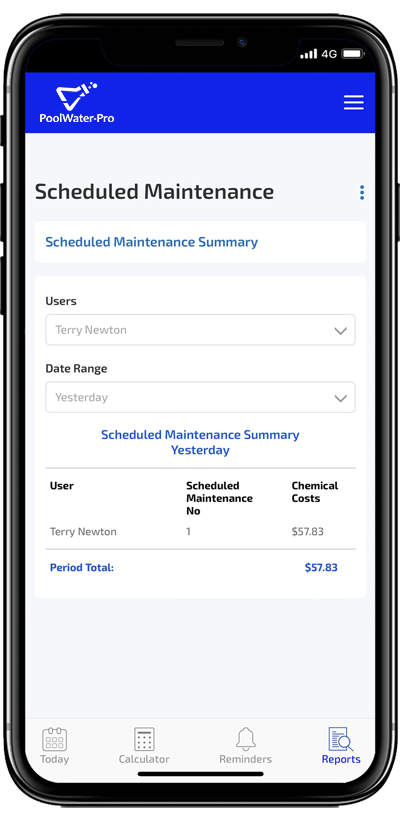How Often Should I Clean My Pool?
Frequency of use, visual appeal, weather conditions and maintaining healthy pool water, all determine the regularity required for your pool maintenance routine. If cleaning and maintenance are neglected, you risk damage to your pool shell. Concrete, fibreglass and vinyl liner pools are built to withstand constant exposure to water and chemicals, but chemical imbalances accelerate deterioration of their surfaces, requiring costly refurbishment earlier than expected.
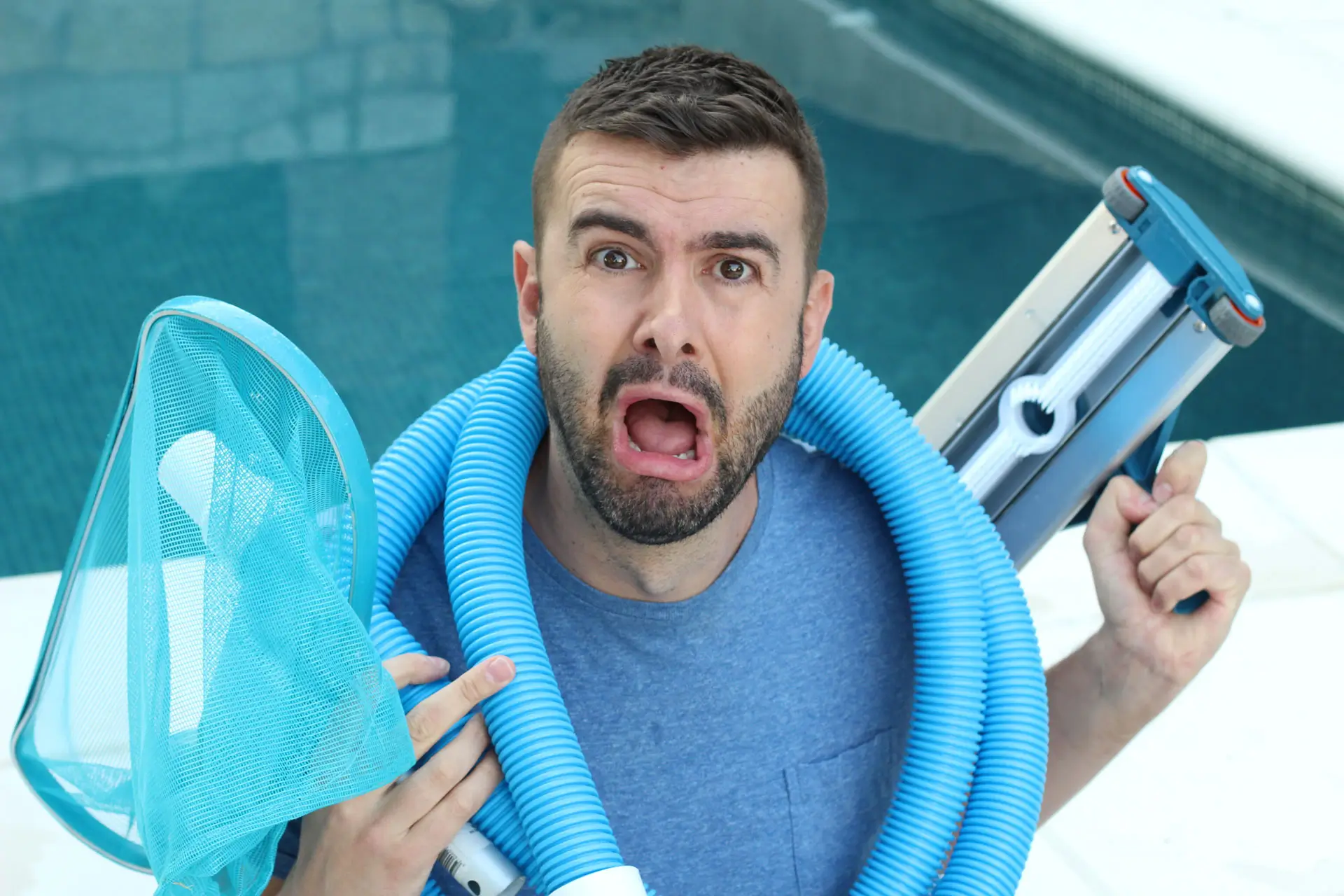
- Neglected Pools & Staining
- Low or High Chlorine
- Low or High pH
- Low or High Alkalinity
- Low or High Calcium
- Low or High Stabiliser (CYA)
- Suggested Timing for Pool Maintenance Tasks
Neglected Pools & Staining
When a pool is neglected, leaves, twigs, debris, insects and algae can build-up and interact with pool surfaces and cause staining.
Many stains can be removed, but some may become permanent if your pool is ignored for an extended period of time.

Low or High Chlorine
In a low chlorine environment, algae, bacteria and other microscopic organisms may not be controlled, posing potential health risks for swimmers.
High chlorine levels can cause skin and eye irritation for swimmers. Chlorine is a strong oxidising agent that can degrade the gel goat in fibreglass pools and damage the vinyl material in vinyl liner pools.
Free chlorine levels should be maintained between 1-3 ppm.
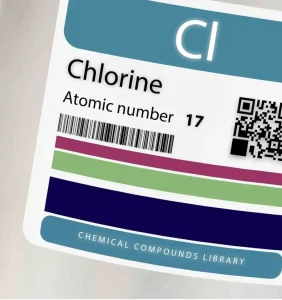
Low or High pH
In a concrete pool low pH can lead to etching of the surface, weakening the concrete and contributing to deterioration of the pool structure.
In fibreglass pools, low pH levels can discolour or dull the gel coat, greatly reducing its lifespan.
Low pH can degrade vinyl liners, causing shrinkage, wrinkles, brittleness and requiring the liner to be prematurely replaced.
For all pool finishes, high pH levels can lead to scaling, reduces the effectiveness of chlorine and increases the risk of algae growth.
Recommended pH levels in your pool are in the range 7.2-7.8.
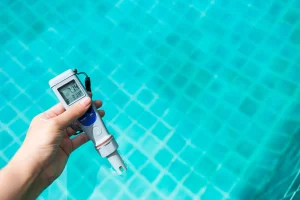
Low or High Alkalinity
Low alkalinity can lead to corrosion of metal components such as ladders, fixtures and fittings or etching of the gel coat in fibreglass pools. In vinyl liner pools the liner can become brittle or develop wrinkles, requiring early replacement.
High alkalinity can cause scaling, reduce chlorine’s ability to sanitise and increases the risk of a green pool.
Alkalinity target levels are 80-120 ppm.
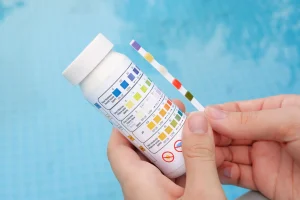
Low or High Calcium
For concrete pools low calcium levels in the water can cause the water to try to balance itself and become aggressive by dissolving calcium carbonate from the plaster or concrete surfaces. Other chemical imbalances can increase pH fluctuation, creating potential for staining and scaling.
Low calcium in fibreglass pools can cause the gel coat (the top layer of the fibreglass) to deteriorate, which can cause discolouration and rough spots. Fluctuating pH levels can cause metal staining and etching on the fibreglass surface.
With vinyl liner pools, low calcium levels can cause your liner to become faded, brittle or develop wrinkles.
If calcium levels are too high in concrete pools, calcium carbonate can precipitate out of the water and form deposits on the walls and floor of the pool.
For all pool surface types, high calcium can contribute to cloudy water. High calcium levels can also have calcium deposits accumulate over time in the pool’s filtration system and pipe-work.
Maintain Calcium Hardness levels between 80-500 ppm.
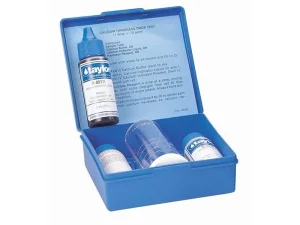
Low or High Stabiliser (CYA)
Stabiliser protects chlorine from UV exposure. Chlorine’s ability to sanitise your pool water is greatly reduced when exposed to UV from the sun. For outdoor pools keep stabiliser levels at 40ppm, 20ppm if you have an ORP (chlorine) sensor probe).
Too much stabiliser inhibits chlorine’s effectiveness and should be used sparingly.
Keep stabiliser levels between the range 20-40 ppm.
Stabiliser is not required for indoor pools.
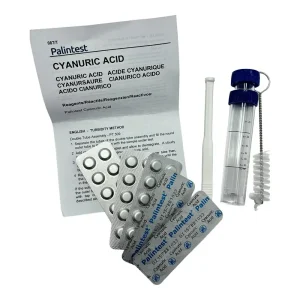
Suggested Timing for Pool Maintenance Tasks
Approaching your pool maintenance with a structured manner will help to keep your pool in optimal condition throughout the year.
Following the schedules below is a pro-active approach and will keep you on top of your pool game.
DAILY
- Empty the skimmer and pump baskets.
- Net the top of the pool to remove leaves and debris.
- Check water level and adjust if necessary.
WEEKLY
- Check and adjust chemicals as needed.
- Vacuum the pool to remove debris and sediment.
- Brush the pool walls, pool floor and water-line.
MONTHLY
- Adjust chlorinator output and filter running times.
- Clean pool filters (backwash media filter or remove & clean cartridge filters.
- Inspect the pool equipment for any leaks or issues.
QUARTERLY
- Test and inspect pool lights and replace as necessary.
- Check solar, gas, or inverter heater for correct operation (if applicable).
- Consider a visit from a pool professional to check everything is in order.
YEARLY
- Conduct a comprehensive inspection for structural issues.
- Service pool equipment as per manufacturer recommendations.
- Clean or replace pool cover or blanket (if applicable).
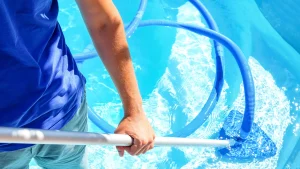
When a pool is neglected, leaves, twigs, debris, insects and algae can build-up and interact with pool surfaces and cause staining.
Many stains can be removed, but some may become permanent if your pool is ignored for an extended period of time.

In a low chlorine environment, algae, bacteria and other microscopic organisms may not be controlled, posing potential health risks for swimmers.
High chlorine levels can cause skin and eye irritation for swimmers. Chlorine is a strong oxidising agent that can degrade the gel goat in fibreglass pools and damage the vinyl material in vinyl liner pools.
Free chlorine levels should be maintained between 1-3 ppm.

In a concrete pool low pH can lead to etching of the surface, weakening the concrete and contributing to deterioration of the pool structure.
In fibreglass pools, low pH levels can discolour or dull the gel coat, greatly reducing its lifespan.
Low pH can degrade vinyl liners, causing shrinkage, wrinkles, brittleness and requiring the liner to be prematurely replaced.
For all pool finishes, high pH levels can lead to scaling, reduces the effectiveness of chlorine and increases the risk of algae growth.
Recommended pH levels in your pool are in the range 7.2-7.8.

Low alkalinity can lead to corrosion of metal components such as ladders, fixtures and fittings or etching of the gel coat in fibreglass pools. In vinyl liner pools the liner can become brittle or develop wrinkles, requiring early replacement.
High alkalinity can cause scaling, reduce chlorine’s ability to sanitise and increases the risk of a green pool.
Alkalinity target levels are 80-120 ppm.

For concrete pools low calcium levels in the water can cause the water to try to balance itself and become aggressive by dissolving calcium carbonate from the plaster or concrete surfaces. Other chemical imbalances can increase pH fluctuation, creating potential for staining and scaling.
Low calcium in fibreglass pools can cause the gel coat (the top layer of the fibreglass) to deteriorate, which can cause discolouration and rough spots. Fluctuating pH levels can cause metal staining and etching on the fibreglass surface.
With vinyl liner pools, low calcium levels can cause your liner to become faded, brittle or develop wrinkles.
If calcium levels are too high in concrete pools, calcium carbonate can precipitate out of the water and form deposits on the walls and floor of the pool.
For all pool surface types, high calcium can contribute to cloudy water. High calcium levels can also have calcium deposits accumulate over time in the pool’s filtration system and pipe-work.
Maintain Calcium Hardness levels between 80-500 ppm.

Stabiliser protects chlorine from UV exposure. Chlorine’s ability to sanitise your pool water is greatly reduced when exposed to UV from the sun. For outdoor pools keep stabiliser levels at 40ppm, 20ppm if you have an ORP (chlorine) sensor probe).
Too much stabiliser inhibits chlorine’s effectiveness and should be used sparingly.
Keep stabiliser levels between the range 20-40 ppm.
Stabiliser is not required for indoor pools.

Approaching your pool maintenance with a structured manner will help to keep your pool in optimal condition throughout the year.
Following the schedules below is a pro-active approach and will keep you on top of your pool game.
DAILY
- Empty the skimmer and pump baskets.
- Net the top of the pool to remove leaves and debris.
- Check water level and adjust if necessary.
WEEKLY
- Check and adjust chemicals as needed.
- Vacuum the pool to remove debris and sediment.
- Brush the pool walls, pool floor and water-line.
MONTHLY
- Adjust chlorinator output and filter running times.
- Clean pool filters (backwash media filter or remove & clean cartridge filters.
- Inspect the pool equipment for any leaks or issues.
QUARTERLY
- Test and inspect pool lights and replace as necessary.
- Check solar, gas, or inverter heater for correct operation (if applicable).
- Consider a visit from a pool professional to check everything is in order.
YEARLY
- Conduct a comprehensive inspection for structural issues.
- Service pool equipment as per manufacturer recommendations.
- Clean or replace pool cover or blanket (if applicable).

Introducing Effective Solutions
Simplify your pool maintenance routine with POOLWATER-PRO. Our software turns test-strips into accurate digital readings, right from your phone. Get instant alerts to know if your pool is safe to swim, plus any chemicals needed.
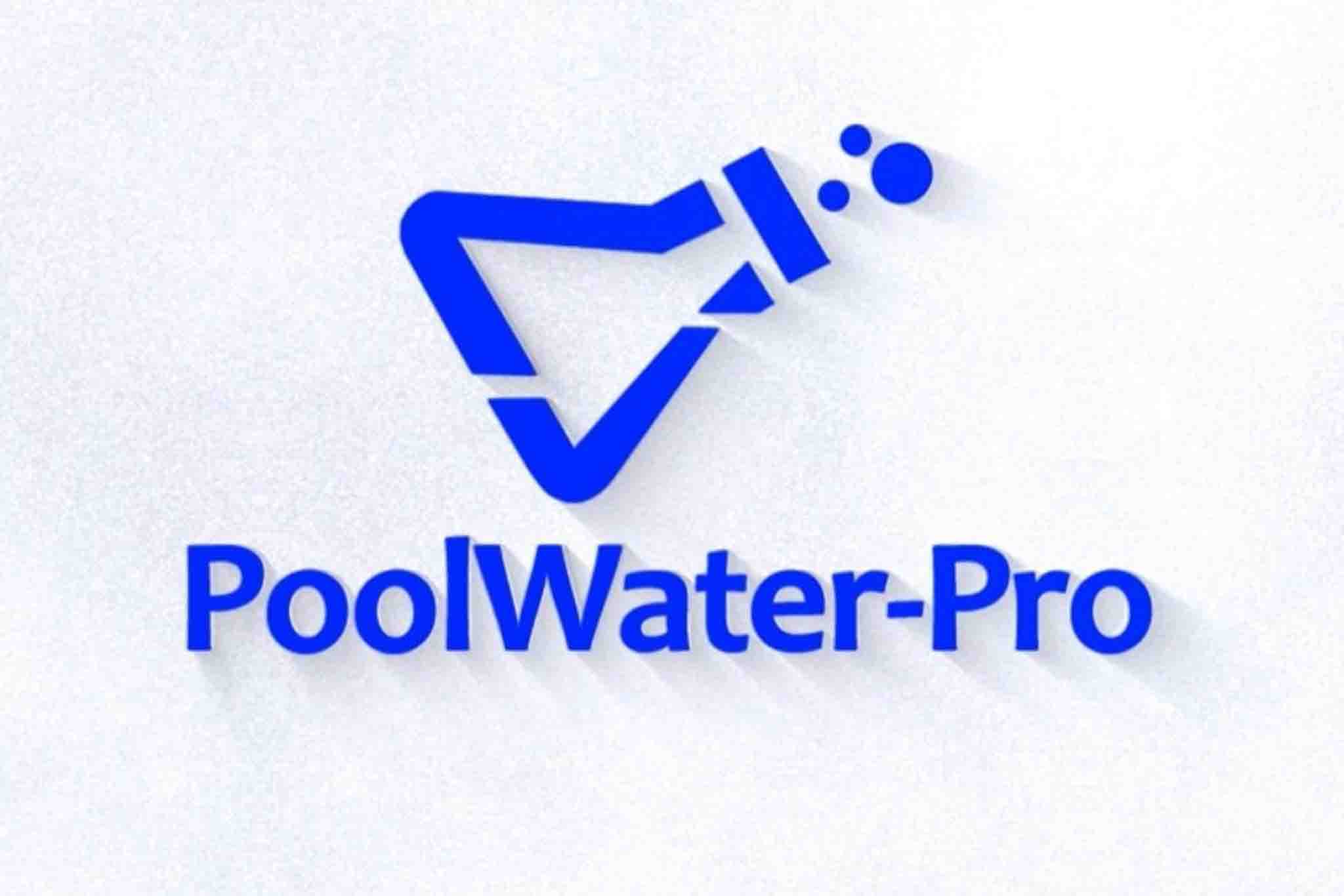
Introducing Effective Solutions
Simplify your pool maintenance routine with POOLWATER-PRO. Our software turns test-strips into accurate digital readings, right from your phone. Get instant alerts to know if your pool is safe to swim, plus any chemicals needed.
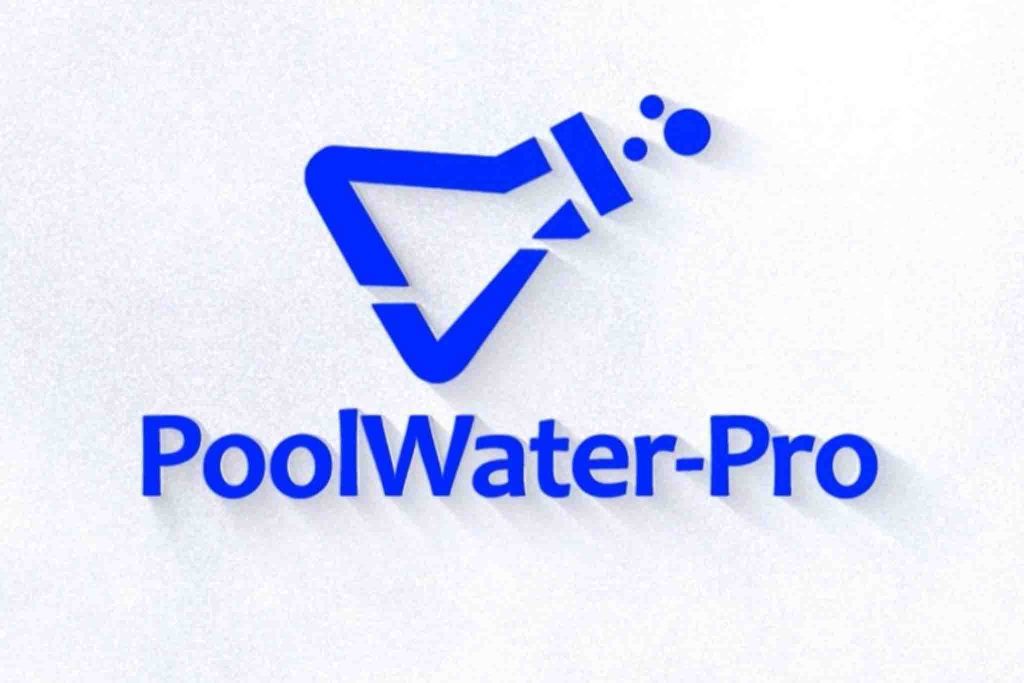
Your Path to Clarity
Watch this quick explainer video to see the platform’s features and how it can make pool care hassle-free.
Watch this quick explainer video to see the platform’s features and how it can make pool care hassle-free.



